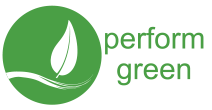As part of Perform Green’s focus on wellbeing in the workplace, Simon Paul Ogden, Perform Green Associate provides a peak into his new book
Why developing awareness will help you to deliver your peak perfomance at work
Much of my work is about helping people develop ‘personal awareness’ of themselves and the surroundings in which they are living/working, with the aim of improving their overall performance. However what is awareness? In reality awareness is a nebulous concept. One Chief Executive claiming he had high levels of personal awareness wanted to show me a presentation he had made to a large group of potential customers to prove the point. As he stood being introduced by the compere he was rubbing his hands repeatedly up the inside of his thighs to his groin, in full view of the audience. As we watched the recording I pointed this out to him and asked if he had been aware of what he was doing and what message he was hoping to get across. He was horrified, he hadn’t noticed. Likewise, over the years, I have observed people in the workplace doing the most peculiar things with their hands, legs, knees – including picking at their ears, nose, armpits etc. whilst communicating with others. People are conscious yet not aware.
In learning and development we often use the words awareness and consciousness without differentiating the two terms – hardly surprising when both are often used in the definition of each other.
Consciousness is about being ‘awake’ to one’s surroundings. However, how ‘awake’ we are will vary substantially from one situation to another. We can obviously be ‘awake’ whilst walking down the road daydreaming about being in Australia. At what point between being in deep sleep and being completely wide awake are you truly ‘aware’ of your surroundings. Research has shown that people in the workplace spend as much as fifty per cent of their time thinking about something other than what they are doing.
Awareness can be defined as our experience of being awake.
- How deep is this awareness?
- How sensitive are you to your surroundings?
- Are you able to ‘respond’ to events as they occur or do you merely ‘react’ emotionally?
Why is this important?
The first case study in my book ‘The Feldenkrais Method for Executive Coaches, Managers, and Business Leaders’ refers to two senior managers running a customer service department handling technical enquiries relating to high cost products. They had a history of low level antagonism to each other and one day it erupted into a full blown argument in front of their staff and overheard by customers throughout the world. They were both competent engineers who had obviously been good at their jobs. However, their reaction on that day resulted in them being dismissed for gross misconduct. A reaction can be defined as:
Any action that occurs without awareness of a conscious intention.
It is this lack of awareness that often results in the many confrontations that occur between managers, employees and customers. It creates the toxic environments that cause stress – one of the leading causes of absenteeism in the workplace.
So how can we develop awareness?
Every action we undertake comprises of four components – thinking, emotion, sensation, and movement.
A change in one component will have an impact on another. However, we are not generally aware of the interrelationship between one and the other. This is especially true of the emotional impulse which operates at a much higher speed that logical/rational thought – this is why people often reflect their emotion and lash out before realising what they have done. The most direct way to strengthen the relationship between all components (especially thinking and emotion) is through developing awareness of movement – because the majority of our central nervous system is concerned with movement.
In the book we have provided a series of ‘awareness through movement’ lessons designed specifically for people in the workplace. However, the following is an exercise you can do anytime of day and one that I have given to all of my clients:
Quite simply – become aware of your walking
We spend much of the day walking without sensing what we are doing.
- Sense your feet as they touch the ground. Feel the heel and toes.
- Feel the movement through your legs up to you pelvis and then from your pelvis to your shoulder girdle, neck and head.
- Notice what you are doing with your hands and arms.
- Become aware of your breathing.
- Don’t interfere with the movement – observe. Don’t think or over analyse the movement – just sense the movement.
This exercise is actually much harder to commit to than it may appear. Whilst it requires no extra time to be set aside for it, ironically most people are so unaware that they forget to do it.
I am always interested in hearing about peoples experience and I am more than happy to add additional elements to the walking exercise. Please feel free to contact me through Perform Green, contact info@performgreen.co.uk if you would like to know more.
This content is part of a series in relation to the book “The Feldenkrais Method for Executive Coaches, Managers, and Business Leaders”, you can view the first interview with Paul here. You can also find out more about Perform Green’s approach to learning and organisational development in the workplace here.
Next Feature from Paul: Understanding Self Image for Continued Success
For more details about The Feldenkrais Method for Executive Coaches, managers, and Business Leaders follow the link http://www.routledge.com/9781138230910
